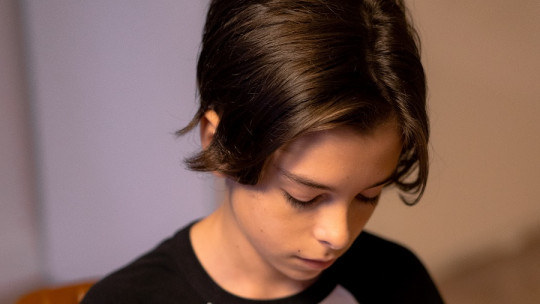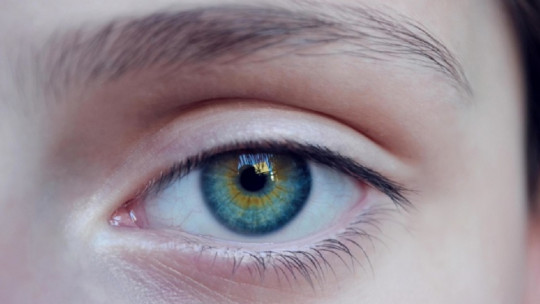
Being a teenager is not easy. Adolescence is the transitional stage that occurs between childhood and adulthood; it includes a wide range of transformations. During this period – which goes from 12 to 18 years old – adolescents experience a series of important changes both in their body and in the way they relate to the world.
The amount of physical, social, emotional, sexual and cognitive changes that occur in adolescence can cause different feelings and reactions both in children and in their immediate environment. This is part of the typical teenage experience.
Teenagers often exhibit strange behavior, they may even act impulsively, due to the unusual feelings and thoughts they experience as part of growing up. They may also spend a significant amount of time worrying about how to act in various social situations.
It is crucial to understand the difference between normal life stage behavior and the symptoms of a mental illness. In this article we explore borderline personality disorder in young people in depth to help make the distinction and decide when typical adolescent behavior occurs and what signs might need attention.
What is borderline personality disorder?
Dealing with the symptoms of borderline personality disorder (BPD) can be confusing and frustrating for the patient’s immediate environment. This also happens in the case of adolescents: Parents who have children with BPD do not understand exactly the reason for their behaviors and reactions.
Furthermore, in the case of borderline personality disorder in adolescents, there is some controversy in the diagnosis. In fact, we don’t know much about how the disorder presents in adolescents; although the symptoms of adults with BPD are well known. This means that some patients are not evaluated correctly until they reach adulthood, which implies a series of problems in their development.

Borderline personality disorder is a serious mental illness that manifests itself a pervasive pattern of unstable emotions, relationships, and behaviors. People with BPD frequently present the following symptoms: self-esteem problems, mood swings, imbalances in self-image, lack of impulse control, and fear of abandonment and inappropriate anger. In some cases, they may include self-harm.
People with BPD have difficulty controlling their emotions in certain situations. It is common for those who suffer from BPD to also live with other mental disorders that may include: anxiety, depression, substance abuse, and eating disorders.
BPD affects approximately 2% of the world’s population. However, many people with BPD are misdiagnosed as having PTSD, ADHD, bipolar disorder, or depression. Consequently, the real prevalence of people diagnosed with BPD may be higher than estimated, especially in those under 18 years of age.
It is essential to understand the signs and symptoms of BPD in adolescents. By recognizing the disease early and making an early diagnosis, it can be treated faster and more effectively.
Symptoms of borderline personality disorder in adolescents
There are a series of criteria collected by the DSM-5 for the diagnosis of BPD. This It is defined by the presence of at least 5 of 9 of the signs, which include:
Some of the symptoms collected, such as impulsive behavior, maintaining an unstable self-image and feelings of emptiness, may manifest differently in people under 18 years of age than in adults. Furthermore, sometimes there are difficulties distinguishing between the symptoms of borderline personality disorder and the typical challenges of adolescence. However, there are a series of criteria that can help identify BPD in adolescents.
Behavioral dysregulation
Behavioral problems that involve self-destructive behaviors are one of the first signs that can show the presence of BPD in adolescents. Some teens with BPD may cut themselves, burn their skin, or hit the wall in order to harm themselves. Additional problems may also arise: Teens with BPD may have risky sexual encounters or use substances.
Relationship problems
Children and adolescents with BPD often face various difficulties in managing their relationships. Some may have a strong fear of abandonment, while others may manifest uncontrollable anger. In situations of extreme emotional distress, some teens with BPD may develop paranoid or irrational beliefs. This makes it difficult for them to establish and maintain relationships over time; these ties include both friends and romantic partners.
Strong emotional reactions
People with BPD often overreact to problems. The slightest setback can seem like the end of the world, even if this is quite insignificant. It is also common for adolescents to experience a series of intense emotions when interacting with others, which can cause sudden changes in behavior and difficulties when it comes to relationships.
Self-esteem problems
Adolescents with borderline personality disorder may compare themselves negatively to other people who seem to be able to easily handle things that they see themselves incapable of doing. You may also ask yourself, “Why don’t others act like me?” These questions lead to serious self-esteem problems and a devalued self-image.
As we have noted above, it is difficult for health professionals and parents to determine whether a teenager has early symptoms of BPD or is going through a normal phase of adolescence when these signs are observed.
Taking into account the symptoms just detailed, if a teenager experiences intense emotions for longer than others or takes longer to return to a neutral state, this may signify the onset of BPD. Exaggerated reactions to minor setbacks, and the inability to handle them in an adaptive way, in which substance abuse or self-harm are the only way to make them go away – and feel better – are signs of the existence of a serious problem. . Adolescents and families They should seek help if they display any type of self-destructive behavior.
- Related article: “Do you really know what self-esteem is?”
Diagnosis of borderline personality disorder in adolescents
Currently, BPD in adolescents It is recognized as an official diagnosis. The most recent version of the Diagnostic and Statistical Manual of Mental Disorders, or (DSM-5), allows people under 18 years of age to be diagnosed with borderline personality disorder. However, some experts claim that BPD should not be diagnosed until the individual’s personality is fully formed. Although the provision technically allows the diagnosis of BPD in children under 13 years of age, this is very rare.
To carry out an evaluation of BPD in adolescents, mental health professionals have to observe, in addition to the behaviors and diagnostic signs of the disorder, the intrinsic motivations for the appearance of this type of maladaptive behaviors in the subjects.
For example, substance abuse or risky sexual behaviors They are not an unequivocal symptom that a person suffers from BPD. However, if this behavior is used to avoid facing a problem or evade feelings, this could mean the existence of BPD underlying the manifestation of the behavior.
Although there is some controversy regarding the diagnosis of BPD, recent research suggests that children over the age of 11 are able to understand and explain the motivations behind their behaviors. Which makes it possible to diagnose the disease from an early age.
BPD symptoms tend to decrease in diagnosed adults as they age, especially after 40 years of age. Currently, the course and prognosis of the disease in adolescents with BPD are still not exactly known. However, research suggests that appropriate treatment can significantly improve the management of different symptoms.
A review published in 2015 indicated that between 50% and 65% of adolescents showed remission of BPD symptoms after being diagnosed and receiving appropriate treatment. However, it should be noted that Some BPD symptoms may persist in adolescents who no longer meet the diagnostic criteria for the illness.








